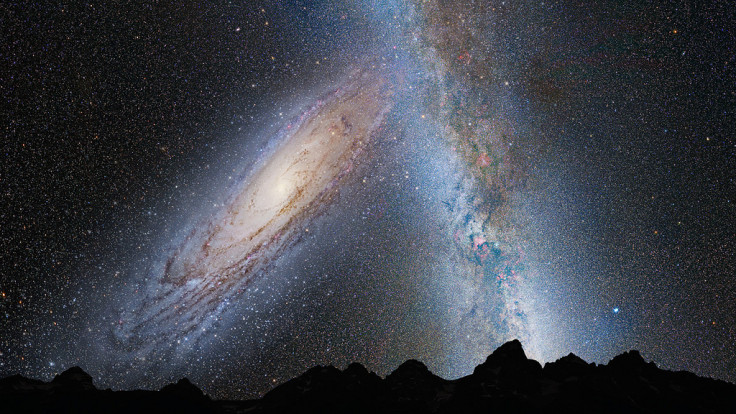Giant ring of galaxies scattered during Andromeda flyby challenges Einstein's theory of gravity
Galaxies are moving away far faster than Einstein's theory can account for.
A huge ring of galaxies spanning 10 billion light years is challenging Albert Einstein's theory of gravity. The cluster appears to be moving away from us far faster than it should be – expanding like a mini Big Bang – and this means our current understanding of gravity is not quite right.
In two papers, one published in the Monthly Notices of the Royal Astronomical Society and the other currently under review, scientists observed the speeds at which a group of galaxies in our local universe are moving.
At present, the Milky Way and our closest neighbour Andromeda are moving towards each other at a speed of around 110 kilometres per second.
In the past, however, the two galaxies flew past each other creating a sling-shot effect on lots of smaller galaxies – sending them flying out into space.
But what the team observed was not right. The group of galaxies is moving away from us at speeds far faster than any Andromeda flyby could have produced. Hongsheng Zhao, co-author both papers, said: "If Einstein's gravity were correct, our galaxy would never come close enough to Andromeda to scatter anything that fast."
Lead author Indranil Banik said the ring-like distribution of the group of galaxies is also very odd. "I found there is barely a one in 640 chance for randomly distributed galaxies to line up in the observed way," he said. "I traced their origin to a dynamical event when the Universe was only half its present age."

"In Einstein's gravity paradigm, hypothetical dark matter is always invoked. Such a high speed requires 60 times the mass we see in the stars of the Milky Way and Andromeda. However, the friction between their huge halos of dark matter would result in them merging rather than flying 2.5 million light years apart, as they must have done."
The researchers say that, if correct, the speed of the galaxies could only be explained if gravity gets weaker as galaxies drift apart that the standard model currently suggests. "Several aspects of the spatial distribution of these galaxies would be expected to occur if there was a past close MW-M31 flyby," they wrote. "Such an event only makes sense in the context of certain modified gravity theories where galaxies lack massive dark matter halos and their associated dynamical friction in close encounters, which would otherwise cause a merger."
Marcel Pawlowski, a Hubble Fellow at the University of California, Irvine, commented: "Science progresses through challenges. Together with two other known planes of closer-in satellites, this gigantic ring forms a serious challenge to the standard paradigm."
© Copyright IBTimes 2025. All rights reserved.






















